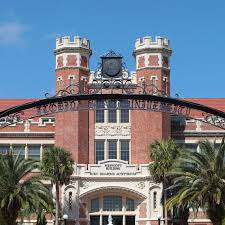Speaker
Description
This presentation will focus on recent advances in understanding the internal structure of baryons and their low-lying excitations. The results are founded on the first-principles approach of Lattice QCD, complemented by Hamiltonian effective field theory (HEFT), a nonperturbative extension of effective field theory incorporating the Luscher formalism.
We'll commence with the low-lying odd-parity nucleon resonances where a new parity-expanded variational analysis enables the first quantitative examination of the electromagnetic form factors of the N(1535) and N(1650) in lattice QCD.
The results lead to a consideration of the even-parity Roper resonance and its isospin-3/2 Delta-resonance partner. Lattice QCD calculations indicate the first radial excitation of the nucleon lies at 1900 MeV, well above the resonance position of 1440 MeV. Using HEFT, experimental scattering data is brought to the finite volume of the lattice where lattice QCD results determine the nature of the Roper resonance. Finally, these techniques are extended to the Delta-resonance spectrum providing new insight into the structure of the low-lying even-parity Delta(1600) resonance.
| speaker affiliation | CSSM, University of Adelaide |
|---|

